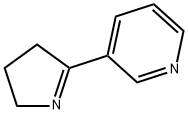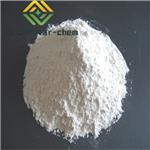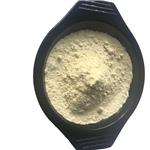The alkaloids found in tobacco smoke may be separated into those which are
volatile in steam and those which are non-volatile. Myosmine occurs in the
former group and, although only present in small quantities, is the most fully
investigated of these bases. The alkaloid is normally obtained as an oily liquid
which may be crystallized. It is optically inactive and readily soluble in light
petroleum or Et20. It forms a hydrochloride as a microcrystalline powder which,
on sublimation yields colourless rods, m.p. ISS-8°C. The dihydrochloride, also a
microcrystalline powder, yields colourless needles on sublimation, m.p. 1S0-
17 Soc. The base also furnishes a dipicrate, m.p. 182-3°C (dec.) and a dipi_x0002_crolonate, m.p. 204°C (dec.). On dehydrogenation it gives 2-(3'-pyridyl)-pyrrole
(picrate, m.p. 200°C) identical with that obtained in a similar manner from nor�nicotine. According to Woodward and his colleagues, the alkaloid is one of
several products formed when nicotine is dehydrogenated over prepared quartz
at S70°C. It is readily hydrolyzed in H20 to yield 3-pyridyl-r-aminopropyl
ketone, forming a crystalline phenylhydrazone, m.p. 20l-2°C.
Tobacco alkaloid
Reactant for:
Nitrosation reactions
Peroxidation reaction with hydrogen peroxide
Myosmine is an alkaloid found in tobacco. Myosmine has been suspected to be a tobacco-independent carcinogenic source.
ChEBI: Myosmine is a member of the class of pyridines that is pyridine substituted by a 3,4-dihydro-2H-pyrrol-5-yl group at position 3. It is an alkaloid found in tobacco plants and exhibits genotoxic effects. It has a role as a plant metabolite, an EC 1.14.14.14 (aromatase) inhibitor and a mutagen. It is a pyrroline and a pyridine alkaloid.
Canadian Journal of Chemistry, 35, p. 651, 1957
DOI: 10.1139/v57-094The Journal of Organic Chemistry, 37, p. 1635, 1972
Tetrahedron Letters, 8, p. 5185, 1967
Spath, Wenusch, Zajic., Ber., 69, 393 (1936)
Woodward, Eisner, Haines., ibid, 69, 7S7 (1936)
Spath, Wibaut, Kesztler., ibid, 71, 100 (1938)



